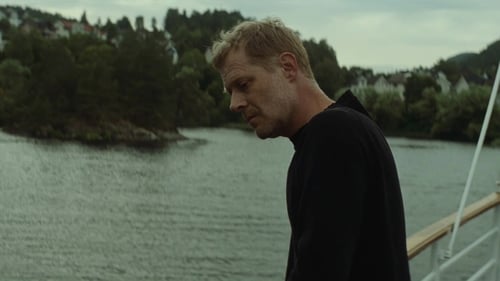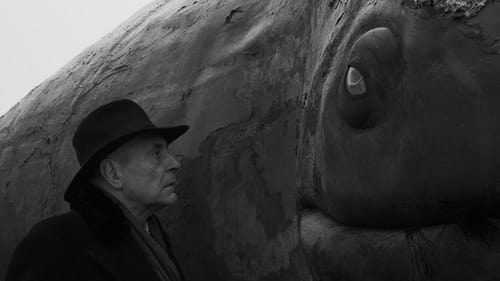Rob Tregenza
출생 : 1950-11-04, Kansas, USA

Writer
German businessman Carsten Neuer travels to Norway to finish the impossible translation of some Norwegian poems by Tarjei Vesaas into Chinese, a project of his late wife. He hires Niko, a down-on-his-luck tour guide, to drive him to the poet's home and places of inspiration to stimulate his own translation. On the road, the ghost of Carsten's wife appears to him, while Niko struggles with the sudden consequences of his girlfriend's pregnancy. On this journey, two very different men come to realize the transforming power of love, the limits of language, and the human need for friendship.

Editor
German businessman Carsten Neuer travels to Norway to finish the impossible translation of some Norwegian poems by Tarjei Vesaas into Chinese, a project of his late wife. He hires Niko, a down-on-his-luck tour guide, to drive him to the poet's home and places of inspiration to stimulate his own translation. On the road, the ghost of Carsten's wife appears to him, while Niko struggles with the sudden consequences of his girlfriend's pregnancy. On this journey, two very different men come to realize the transforming power of love, the limits of language, and the human need for friendship.

Director of Photography
German businessman Carsten Neuer travels to Norway to finish the impossible translation of some Norwegian poems by Tarjei Vesaas into Chinese, a project of his late wife. He hires Niko, a down-on-his-luck tour guide, to drive him to the poet's home and places of inspiration to stimulate his own translation. On the road, the ghost of Carsten's wife appears to him, while Niko struggles with the sudden consequences of his girlfriend's pregnancy. On this journey, two very different men come to realize the transforming power of love, the limits of language, and the human need for friendship.

Director
German businessman Carsten Neuer travels to Norway to finish the impossible translation of some Norwegian poems by Tarjei Vesaas into Chinese, a project of his late wife. He hires Niko, a down-on-his-luck tour guide, to drive him to the poet's home and places of inspiration to stimulate his own translation. On the road, the ghost of Carsten's wife appears to him, while Niko struggles with the sudden consequences of his girlfriend's pregnancy. On this journey, two very different men come to realize the transforming power of love, the limits of language, and the human need for friendship.

Director of Photography
헝가리 평원의 한 작은 마을에서 일어나는 이야기. 온통 서리로 둘러싸여 있는 이 마을에는 눈이 내리지 않지만 날씨는 살을 에는 듯 춥다. 이렇게 당혹스러운 추위에도 수백명의 사람들이 박제된 고래를 보기 위해 서커스 천막 주위에 서 있다. 외지인들의 출현과 혹독한 서리 등으로 평화로운 마을의 질서는 깨지는데...
145분이라는 긴 러닝타임에도 불구하고 단 39개의 숏으로 구성된 영화는 긴 호흡 속에서 독특한 긴장감을 유지한다. 10분 20초에 달하는 오프닝. 춤추는 듯이 좌우로 움직이는 카메라, 타이트한 클로즈업. 스테디 캠으로 촬영된 롱테이크, 여러 문 사이틀 드나드는 자유로운 카메라 워크 등이 돋보인다. <사탄탱고>의 작가인 라즐로 크라스나호르카이가 시나리오를, 벨라타르의 아내인 아녜스 흐라니츠키가 편집을 맡았다. 제2회 전주국제영화제 상영작.

Cinematography
An American art dealer (Miguel Sandoval), who specializes in southwestern topaz, arrives by train in Liverpool. Similarly, a very proper British art dealer (Alex Cox), who specializes in African art, arrives in the same hotel. The two meet in the hotel's abandoned restaurant and decide to set off in finding an evening meal, which becomes problematic immediately when the Brit reveals he is vegetarian. While following their pursuit of a mutually acceptable meal, the main point of the film is their discourse en route to their various attempts at an eatery.

Writer
Against the barren wintry backdrop of a psychiatric hospital, inpatients and authority figures drift through turgid psychological states. We meet the artist Jean and his lover Monica, patients of the facility, and several characters circling its periphery: a guard, an Episcopalian priest, and a church organist. Minimalizing dialogue and plot intricacy, Tregenza concedes only kernels of information, demanding that the viewer breathe dimensionality into his archetypes. Acting out primal instincts of lust, envy, fear, and love, subjects teeter vulnerably on the brink of sanity and insanity, freedom and repression in their attempts to navigate their existence.

Editor
Against the barren wintry backdrop of a psychiatric hospital, inpatients and authority figures drift through turgid psychological states. We meet the artist Jean and his lover Monica, patients of the facility, and several characters circling its periphery: a guard, an Episcopalian priest, and a church organist. Minimalizing dialogue and plot intricacy, Tregenza concedes only kernels of information, demanding that the viewer breathe dimensionality into his archetypes. Acting out primal instincts of lust, envy, fear, and love, subjects teeter vulnerably on the brink of sanity and insanity, freedom and repression in their attempts to navigate their existence.

Director of Photography
Against the barren wintry backdrop of a psychiatric hospital, inpatients and authority figures drift through turgid psychological states. We meet the artist Jean and his lover Monica, patients of the facility, and several characters circling its periphery: a guard, an Episcopalian priest, and a church organist. Minimalizing dialogue and plot intricacy, Tregenza concedes only kernels of information, demanding that the viewer breathe dimensionality into his archetypes. Acting out primal instincts of lust, envy, fear, and love, subjects teeter vulnerably on the brink of sanity and insanity, freedom and repression in their attempts to navigate their existence.

Director
Against the barren wintry backdrop of a psychiatric hospital, inpatients and authority figures drift through turgid psychological states. We meet the artist Jean and his lover Monica, patients of the facility, and several characters circling its periphery: a guard, an Episcopalian priest, and a church organist. Minimalizing dialogue and plot intricacy, Tregenza concedes only kernels of information, demanding that the viewer breathe dimensionality into his archetypes. Acting out primal instincts of lust, envy, fear, and love, subjects teeter vulnerably on the brink of sanity and insanity, freedom and repression in their attempts to navigate their existence.

Editor
The Arc above all is a road movie, and a journey, a modern day odyssey, not dissimilar in mood and tone to Antonioni’s existential trips through the disembodied sensibilities of his characters.

Cinematography
The Arc above all is a road movie, and a journey, a modern day odyssey, not dissimilar in mood and tone to Antonioni’s existential trips through the disembodied sensibilities of his characters.

Music
The Arc above all is a road movie, and a journey, a modern day odyssey, not dissimilar in mood and tone to Antonioni’s existential trips through the disembodied sensibilities of his characters.

Writer
The Arc above all is a road movie, and a journey, a modern day odyssey, not dissimilar in mood and tone to Antonioni’s existential trips through the disembodied sensibilities of his characters.

Director
The Arc above all is a road movie, and a journey, a modern day odyssey, not dissimilar in mood and tone to Antonioni’s existential trips through the disembodied sensibilities of his characters.

Writer
It consists of only nine ten minute segments. Each shot/sequence was filmed only once in 35mm film with direct sound. The complexity and ground breaking originality of these shots has obtained widespread international acclaim.

Cinematography
It consists of only nine ten minute segments. Each shot/sequence was filmed only once in 35mm film with direct sound. The complexity and ground breaking originality of these shots has obtained widespread international acclaim.

Director
It consists of only nine ten minute segments. Each shot/sequence was filmed only once in 35mm film with direct sound. The complexity and ground breaking originality of these shots has obtained widespread international acclaim.
















